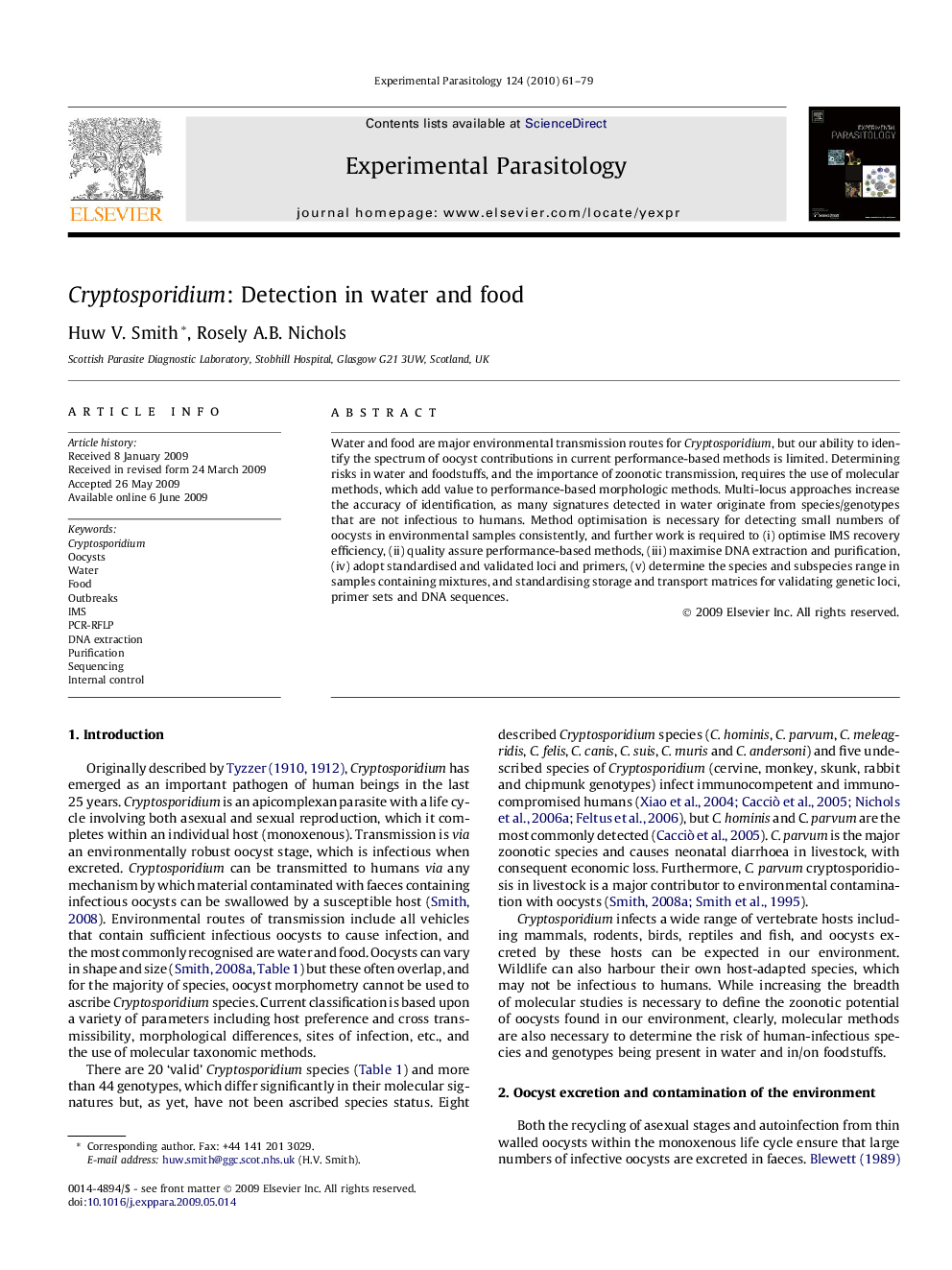| Article ID | Journal | Published Year | Pages | File Type |
|---|---|---|---|---|
| 4371445 | Experimental Parasitology | 2010 | 19 Pages |
Water and food are major environmental transmission routes for Cryptosporidium, but our ability to identify the spectrum of oocyst contributions in current performance-based methods is limited. Determining risks in water and foodstuffs, and the importance of zoonotic transmission, requires the use of molecular methods, which add value to performance-based morphologic methods. Multi-locus approaches increase the accuracy of identification, as many signatures detected in water originate from species/genotypes that are not infectious to humans. Method optimisation is necessary for detecting small numbers of oocysts in environmental samples consistently, and further work is required to (i) optimise IMS recovery efficiency, (ii) quality assure performance-based methods, (iii) maximise DNA extraction and purification, (iv) adopt standardised and validated loci and primers, (v) determine the species and subspecies range in samples containing mixtures, and standardising storage and transport matrices for validating genetic loci, primer sets and DNA sequences.
